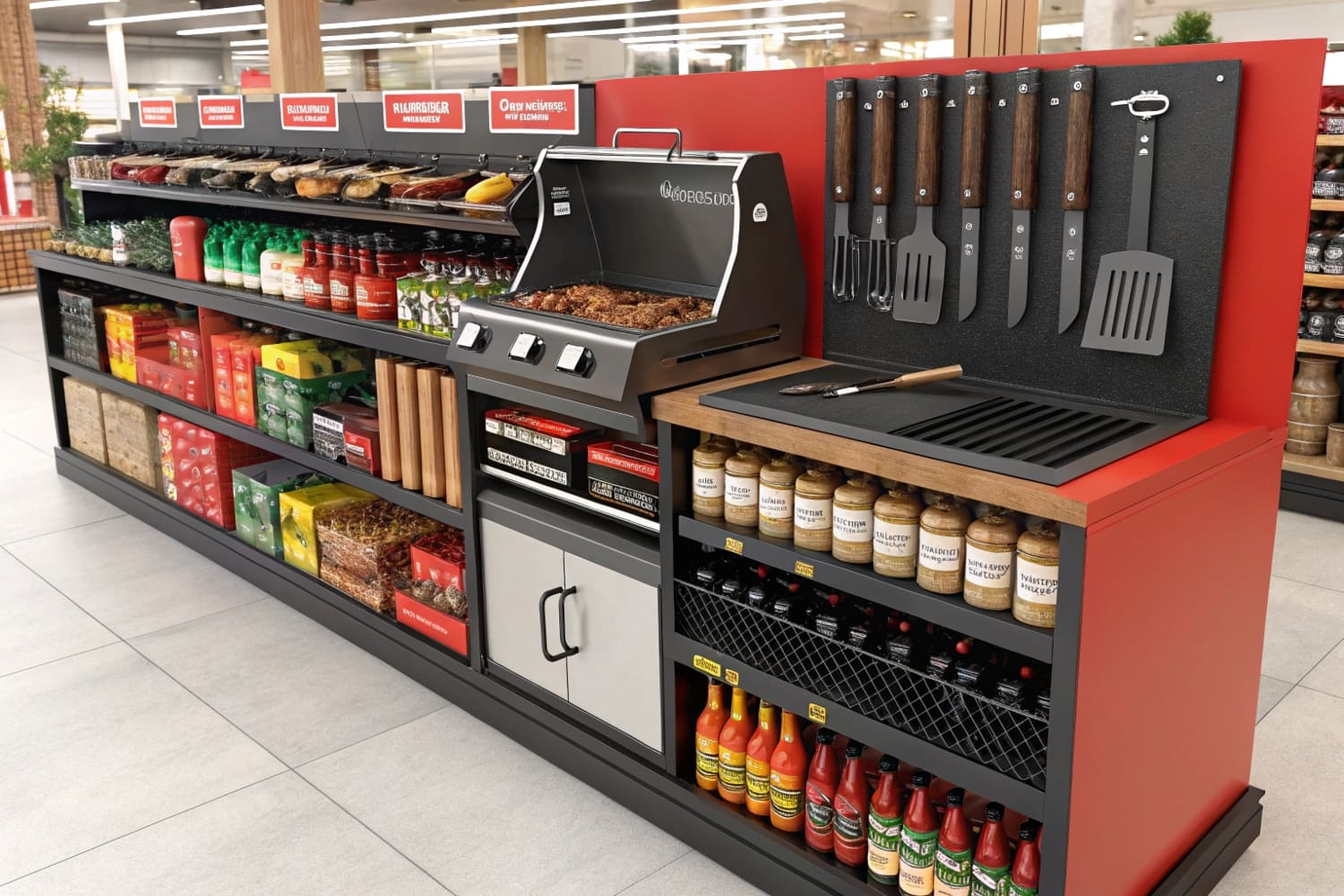Many stores place goods in tidy rows, but shoppers still leave without seeing a link between items. I felt that pain when my first cardboard display failed to move stock.
Cross merchandising is the retail tactic of positioning complementary items together, so one product triggers the idea of another, driving impulse add-ons and lifting average basket value.
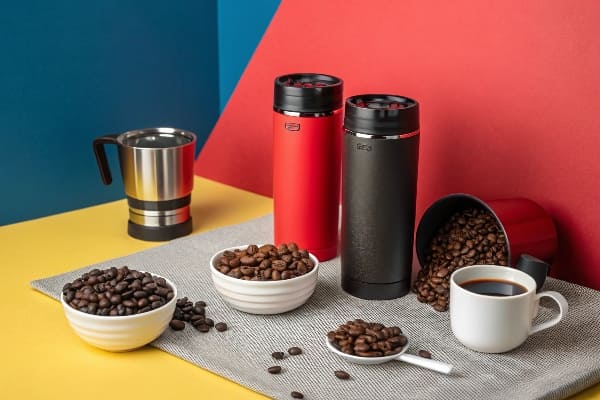
I soon learned that grouping related products on one sturdy cardboard stand could fix that revenue leak. Stay with me, and I will show the steps and pitfalls I faced.
What is an example of cross merchandising?
Shoppers rush, skip aisles, and forget half their list. That lost chance hurts profits.
A simple example is placing salsa jars beside tortilla chips, prompting shoppers to buy both in one reach.
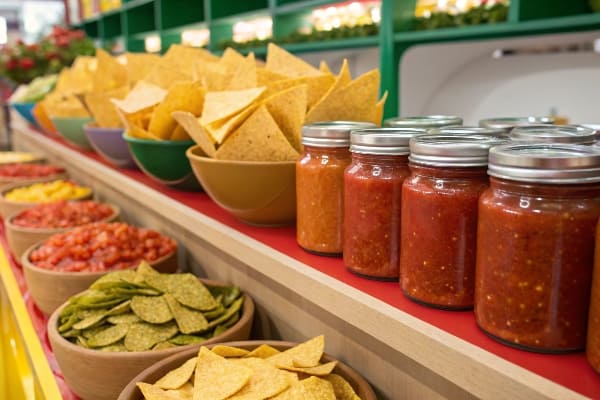
Why This Pair Works
The chip-and-salsa duo solves an instant need: ready snacks. By removing distance between the two, the store erases friction. I once built a compact side-kick display that clipped onto the chip rack. It held six salsa facings and sold out every weekend.
Key Elements
| Element | Purpose | My Tip from the Factory |
|---|---|---|
| Proximity | Sparks impulse thought1 | Attach a header that shows both products in use |
| Visual Cue | Tells a quick story | Use a bright, shared color band across labels |
| Accessibility | Reduces reach effort | Keep heavy jars at waist level, chips above |
Extra Insights
Cross merchandising relies on mental shortcuts. The shopper thinks, “I will need salsa,” without extra cognitive load. Studies show that when items solve a single task, add-on rates rise by up to 30 %. I track sales through barcode data2 supplied by clients. When our cardboard stand traveled with a seasonal BBQ kit, the average ticket jumped by five dollars. Simple move, real gain. My takeaway: partner two goods that answer one immediate mission. Avoid forcing links that feel contrived, like window cleaner beside cereal. The shopper’s brain rejects the association.
How do you cross merchandise?
Aisles are crowded, shoppers are distracted, and you must guide eyes fast.
Cross merchandise by identifying complementary products, mapping their customer journey, and building a joint display that tells one clear story at the point of decision.
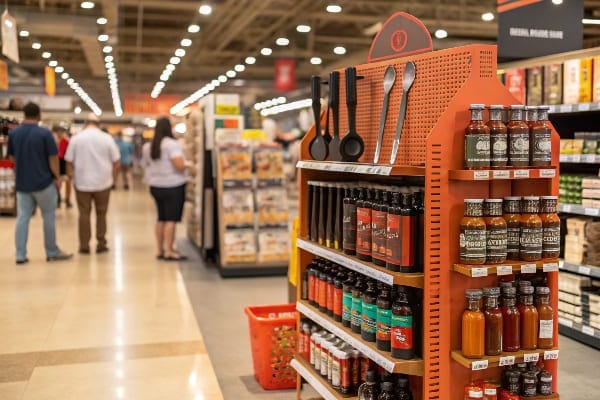
Steps I Follow
| Step | Action | Display Builder’s Note |
|---|---|---|
| 1 | Observe baskets for common pairs | Ask frontline staff for patterns |
| 2 | Choose a hero item3 | Place it at eye level |
| 3 | Add the companion4 | Put it lower or higher, never behind |
| 4 | Create a story card | Use images, not long text |
| 5 | Test and tweak weekly | Swap slow movers fast |
Practical Walk-Through
First, I stand near checkout and list items customers scan together. If many baskets include instant noodles and bottled tea, that is my cue. Next, I design a narrow, two-shelf cardboard stand that fits the aisle end. The header shows a steaming bowl next to a chilled bottle. I print both brand logos on the same background to glue the idea. During the pilot week, the store shares sell-through numbers5 with me. If tea sells but noodles lag, I shift flavors or price tags. My factory cuts fresh shelves overnight because cardboard tooling is fast.
Pitfalls to Avoid
Do not overstuff the display. Too many items dilute the link and confuse shoppers. Keep one hero and one or two companions. Also, check weight limits. Glass bottles can crush flimsy stock. I run load tests at the plant to avoid mid-season collapses that kill trust.
What are the 4 types of merchandising?
Retail categories blur, buyers race, and definitions get messy.
The four types are product merchandising, visual merchandising, retail merchandising, and digital merchandising.

Quick Framework
| Type | Focus | Cross Merchandising Angle |
|---|---|---|
| Product | Assortment depth | Choose items that solve a joint need |
| Visual | Display aesthetics | Use color harmony across paired goods |
| Retail | Shelf strategy | Place hero high, complement low |
| Digital | Online pairing | Suggest add-ons in cart |
Product Merchandising
It answers “What do I sell?” Here, cross merchandising6 starts by picking items that logically belong. For example, fishing line and hooks share an obvious task.
Visual Merchandising
It asks “How do I look?” My displays use contrasting yet harmonious colors. When I teamed herbal tea with honey, I used a soft green backdrop with golden trim. Shoppers felt warmth and health.
Retail Merchandising
This is “Where and when?” End caps, checkouts, and power aisles drive unplanned stops. I slot cross combos at these hot spots. My U-shaped floor stand lets customers circle and see the connection from three angles.
Digital Merchandising
Online stores mimic in-person tactics. Bundles, “often bought together” widgets, and shoppable videos present cross-sell cues. I provide 3D renders of my cardboard units so e-commerce pages can mirror the store layout, keeping the narrative consistent.
Why Classification Matters
Knowing the four buckets helps me pitch to different decision makers. A visual merchandiser cares about color, while an e-commerce manager wants bundle data. Aligning language with their goals speeds approval and keeps projects on schedule.
What is the value of cross merchandising?
Margins shrink, ad costs soar, and every square foot must earn more.
Cross merchandising raises average transaction value, lifts unit velocity, and strengthens shopper convenience without extra advertising spend.
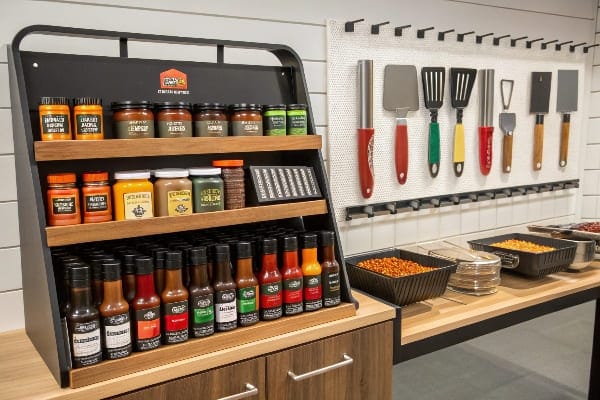
Value Breakdown
| Metric | Typical Lift | Personal Case Note |
|---|---|---|
| Basket Size | +10 %–30 % | Chip-and-salsa test: +22 % |
| Unit Sell-Through | +15 % | Tea-and-noodle stand: +17 % |
| Shopper Time Saved | 30 seconds | Surveyed after BBQ bundle launch |
Detailed Impact
Higher Profit per Visit7
When shoppers pick related goods together, the ticket size grows. I saw a hunting store place wax lubricant beside crossbow cables on my display. Cable sales went up 18 %, wax 35 %. The owner spent zero on extra ads.
Faster Stock Turn8
Cross combos move product pairs quickly, reducing stale inventory. My factory prints batch codes, so we track shelf dates. Faster rotation means fresher perception and fewer markdowns.
Better Shopper Experience9
Convenience drives loyalty. When hunters buy arrows, they remember string wax because it sits right there. They feel the store “gets” them.
Lower Marketing Cost
No extra campaign is needed. The display itself is silent marketing. The one-time cost of a printed stand spreads across months of sales. For wholesale buyers like my partner in the U.S., that efficiency justifies larger orders.
What are the benefits of cross merchandising?
Retail faces rising rent, staff turnover, and fickle shoppers.
Benefits include bigger baskets, reduced search time, improved inventory rotation, stronger brand storytelling, and data-rich insights for future assortments.
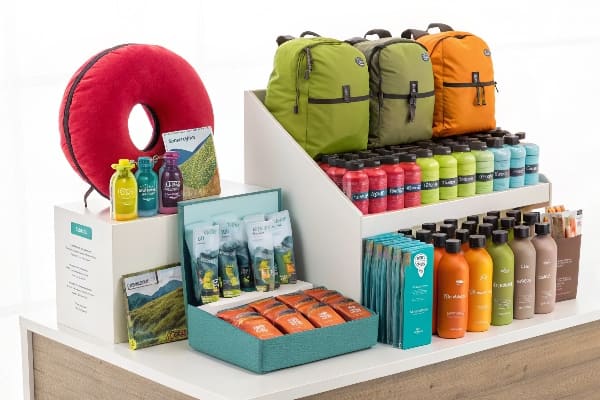
Benefit Matrix
| Benefit | Explanation | How I Leverage It |
|---|---|---|
| Bigger Basket | Add-on sales | Pair bow strings with waxing kit |
| Shorter Search | Convenience | Map meal kits in one zone |
| Faster Turnover | Lower markdowns | Rotate flavors by season |
| Brand Story | Narrative | Use lifestyle graphics on header |
| Data Loop | Rich insights | Track SKU pairs with POS feeds |
Story from the Floor
I built a floor-standing unit for a sports shop. It combined protein bars10, shaker bottles, and pre-workout powder. I printed a simple workout routine on the side panel. Shoppers grabbed all three. In eight weeks, sales of bars doubled. The owner sent me demand data11. I tweaked shelf angles to fit taller bottles, and results improved again.
Long-Term Gain
Cross merchandising12 is not a one-off trick. Each display teaches what pairings work. Over time, that knowledge shapes product development. My U.S. client now designs packaging that lines up visually with planned partners. The synergy starts at design, not shelf.
What is cross shopping in retail?
Consumers move between channels, compare prices, and switch brands freely.
Cross shopping is the behavior of buying products from different price tiers or categories within a single trip or over time.

Understanding the Shopper
| Trait | Example | Impact on Displays |
|---|---|---|
| Price Mixing | Premium cheese plus discount crackers | Show bundle savings |
| Category Mixing | Groceries plus apparel | Use lifestyle end caps |
| Channel Mixing | In-store plus online | Offer QR codes on display |
My Observation
While installing a cardboard stand for premium jerky, I watched shoppers load budget soda into carts. They cross shopped. They splurged on protein yet saved on drinks. Cross merchandising can guide such behavior by framing deals. A “treat yourself” header above jerky and craft soda nudged a higher-margin pair.
Linking Cross Shopping and Cross Merchandising
Cross merchandising can convert cross shoppers into higher spenders. By curating pairs that span price points, you anchor value and entice trade-up. For instance, match budget pasta with gourmet sauce; the upscale sauce lifts perception of the meal, and the shopper feels balanced.
Data-Driven Approach
POS data13 shows that when a shopper buys a premium anchor14, they accept a slightly higher total bill. So I design displays that add a small luxury to a staple. Over months, this shapes purchase habits and lifts overall margin.
Conclusion
Cross merchandising ties related products together, tells a clear story, and lifts sales while making shopping easier. Use thoughtful pairings and sturdy, well-tested displays to keep profits strong.
Exploring impulse thought can help you design better retail displays that capture customer attention and drive sales. ↩
Learning about barcode data can provide insights into consumer behavior and improve inventory management. ↩
Understanding the concept of a hero item can enhance your merchandising strategy and improve sales. ↩
Learning about companion products can help you create effective product pairings that boost customer purchases. ↩
Analyzing sell-through numbers is crucial for optimizing inventory and improving sales performance. ↩
Understanding cross merchandising can enhance your retail strategy by effectively pairing products to boost sales. ↩
Exploring this resource will provide insights into strategies that can enhance profitability in retail settings, crucial for business growth. ↩
This link will help you understand the importance of stock turnover rates and how they can lead to better inventory management and reduced costs. ↩
Discovering this information can help retailers enhance customer satisfaction and loyalty, leading to increased sales and repeat business. ↩
Exploring the benefits of protein bars can help you make informed choices for your health and fitness goals. ↩
Learning about demand data can provide insights into consumer behavior, helping you optimize inventory and sales tactics. ↩
Understanding cross merchandising can enhance your retail strategy, leading to increased sales and customer satisfaction. ↩
Learning about the use of POS data can provide insights into consumer behavior and help optimize product displays for better sales. ↩
Exploring the concept of a premium anchor can reveal how it influences purchasing decisions and overall sales strategies. ↩

